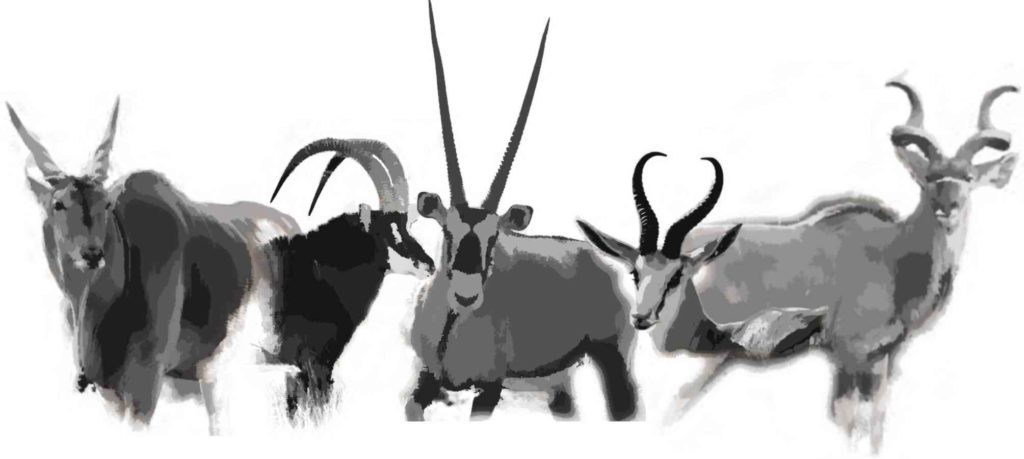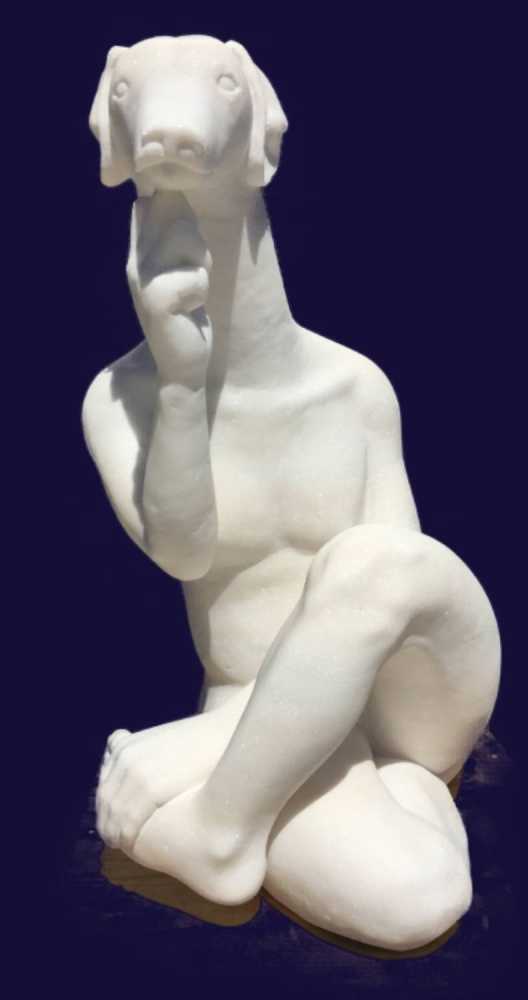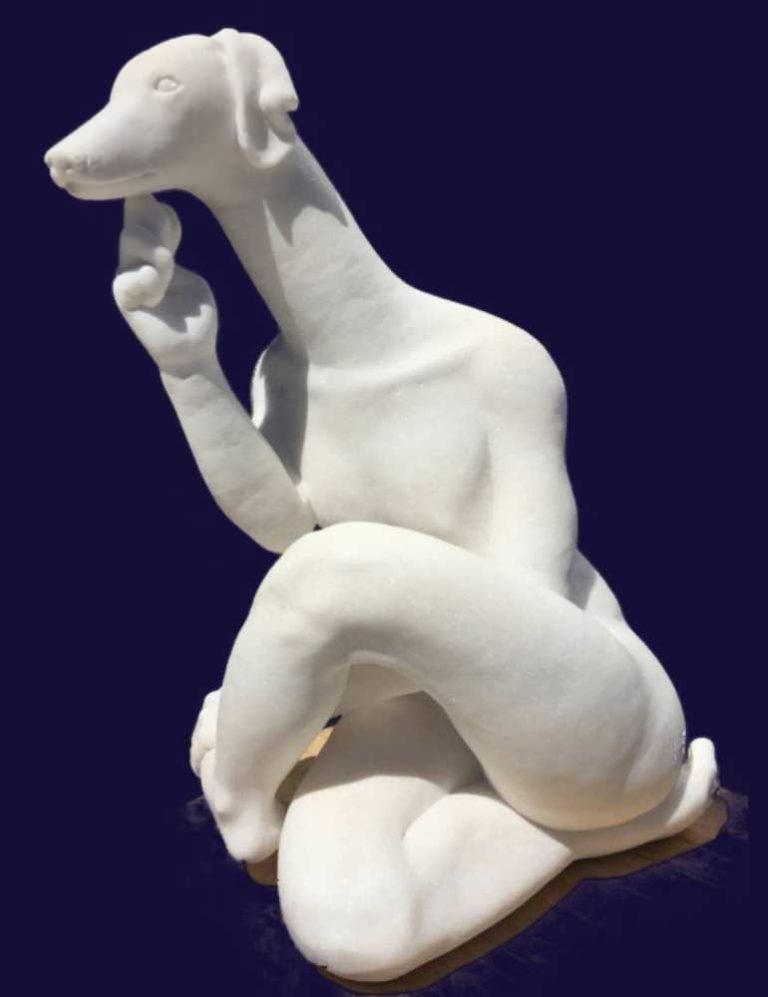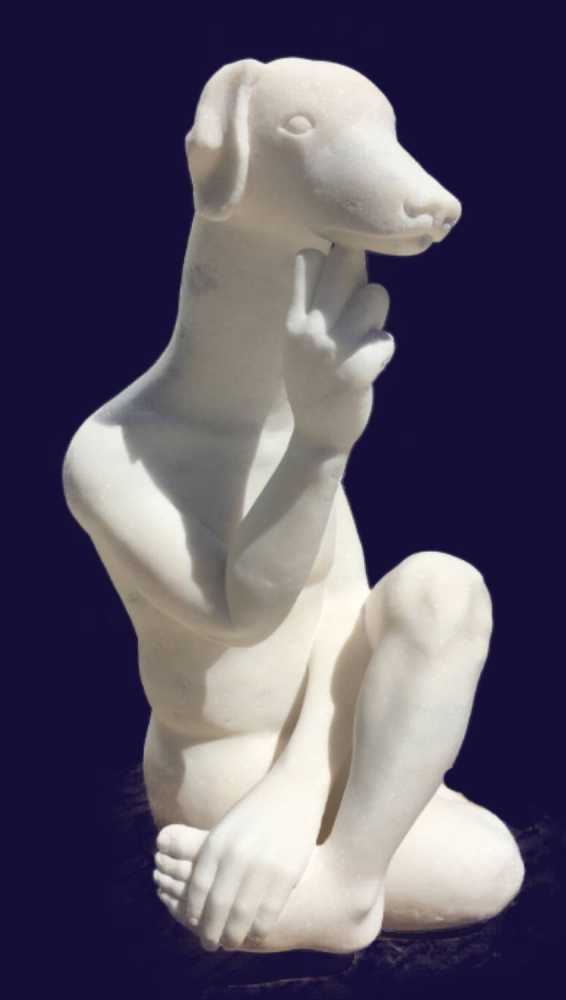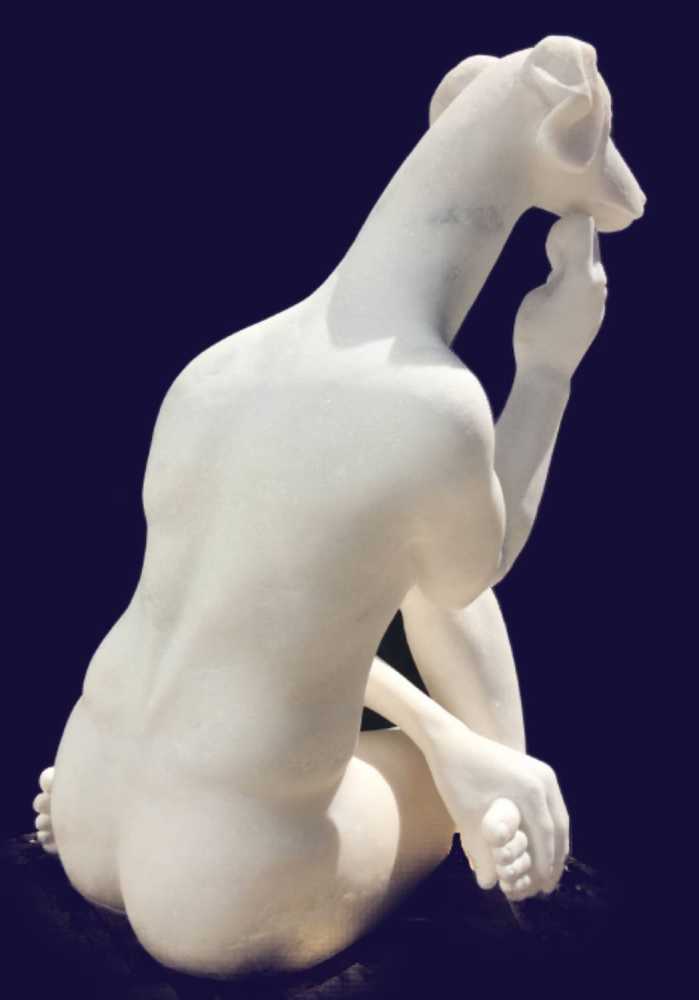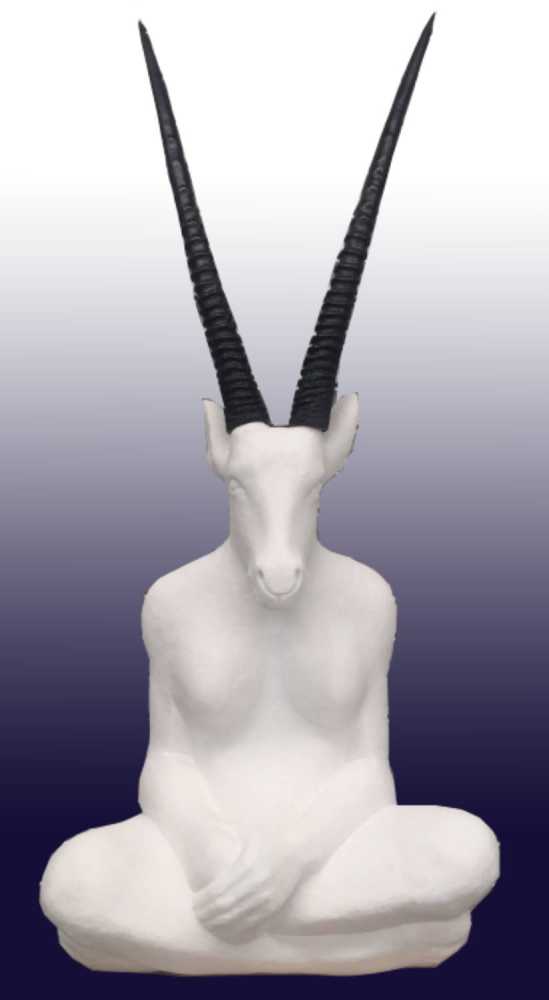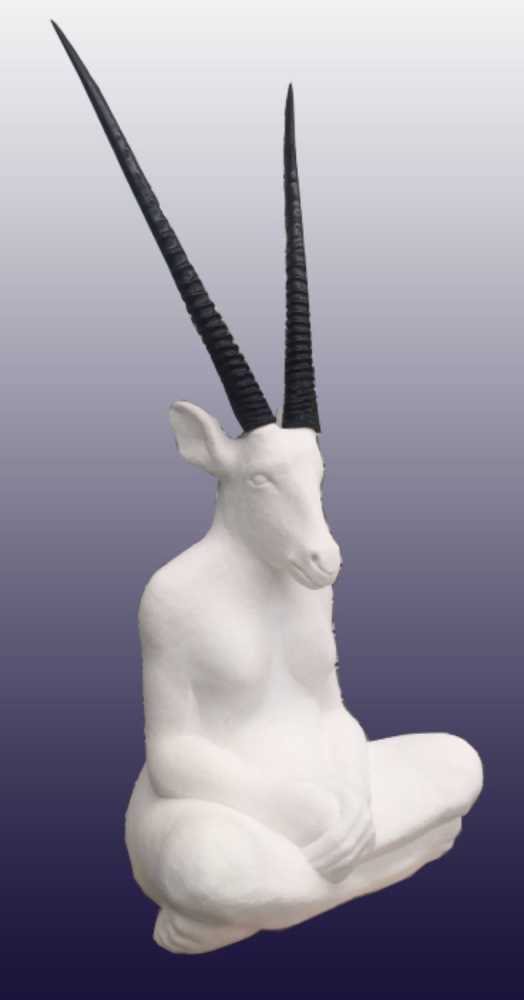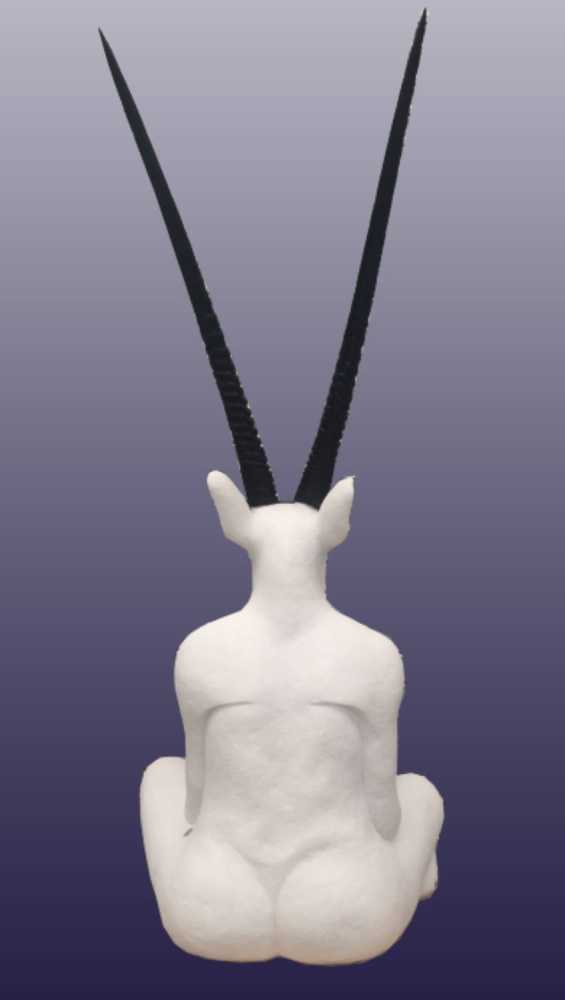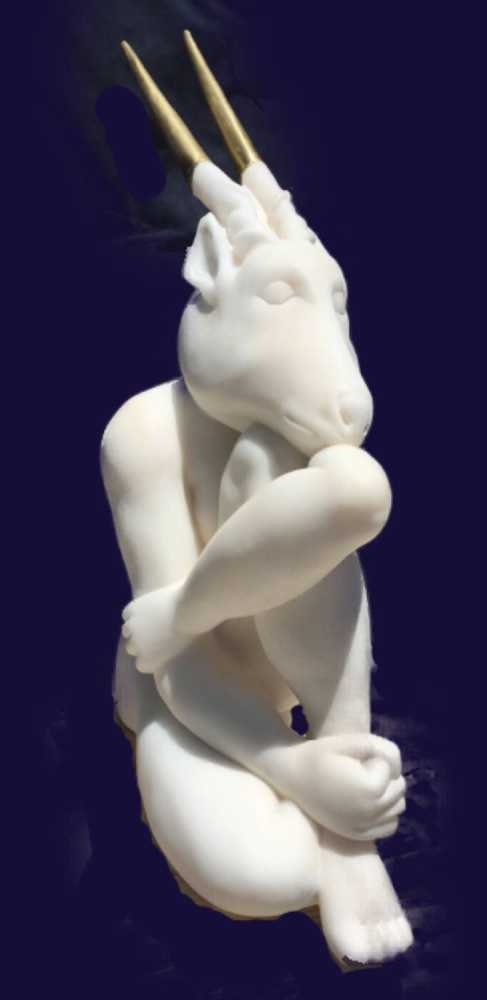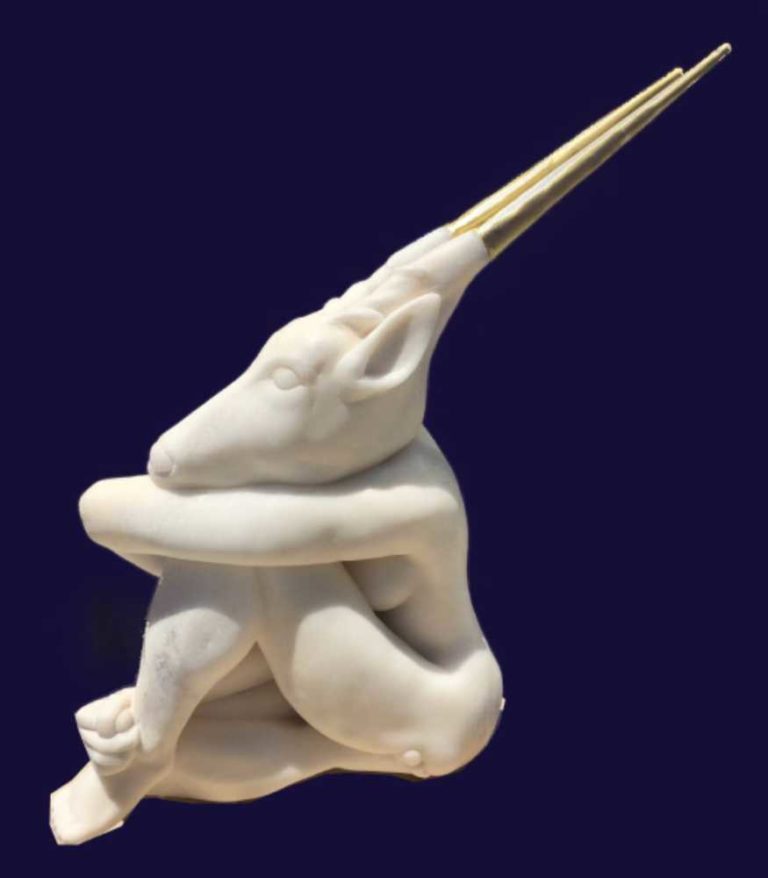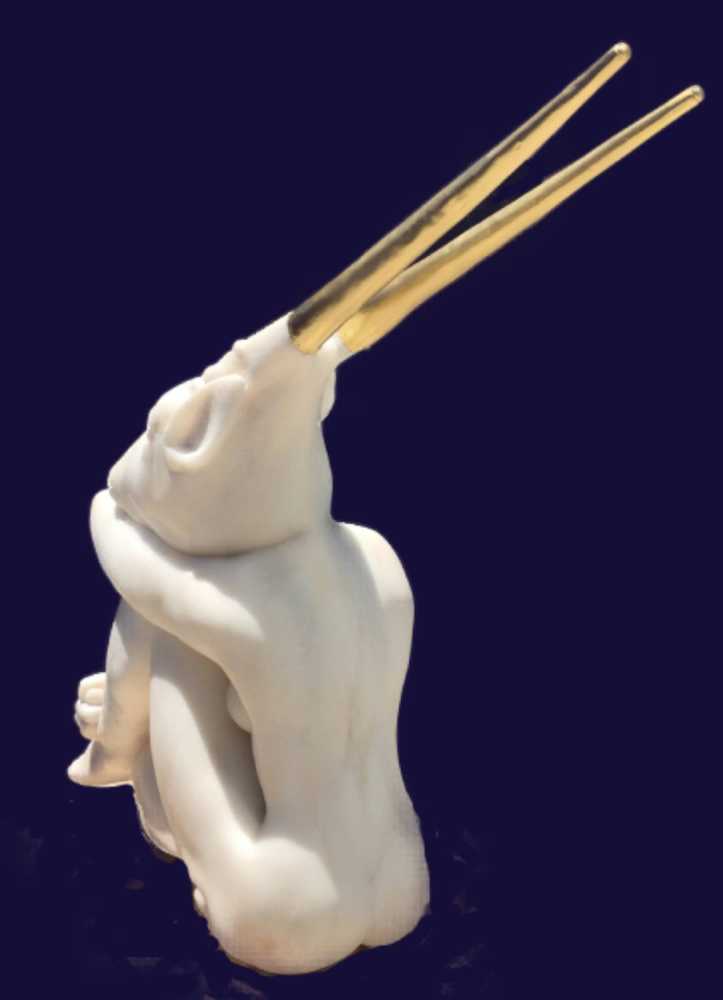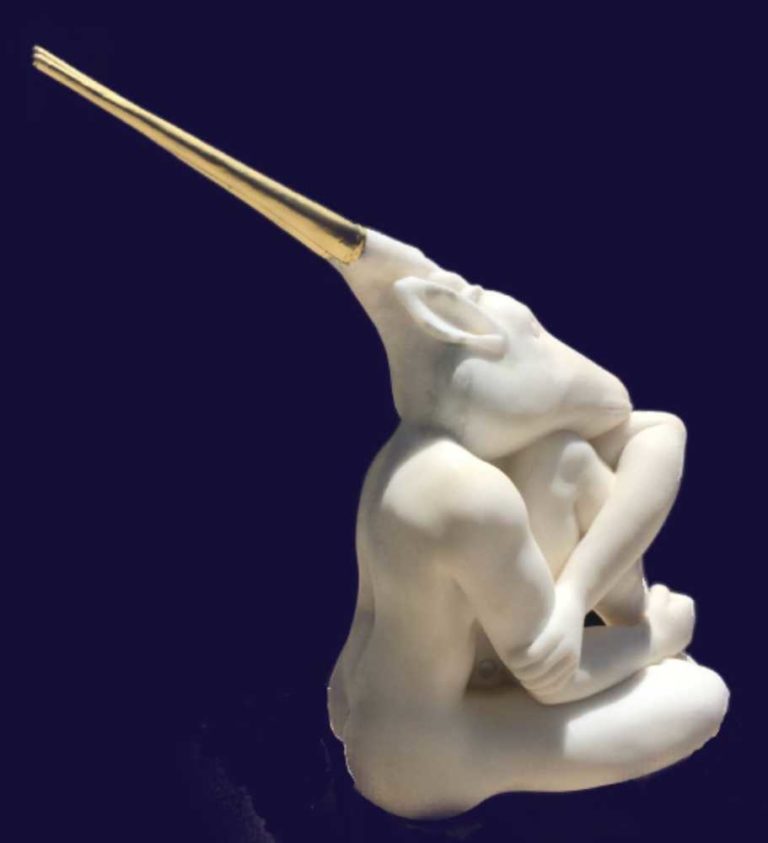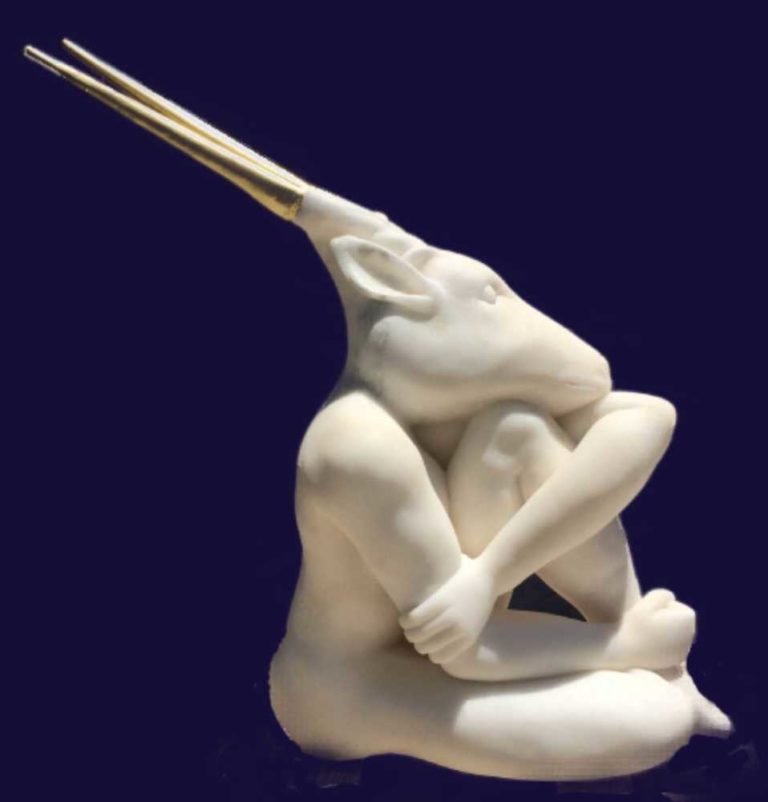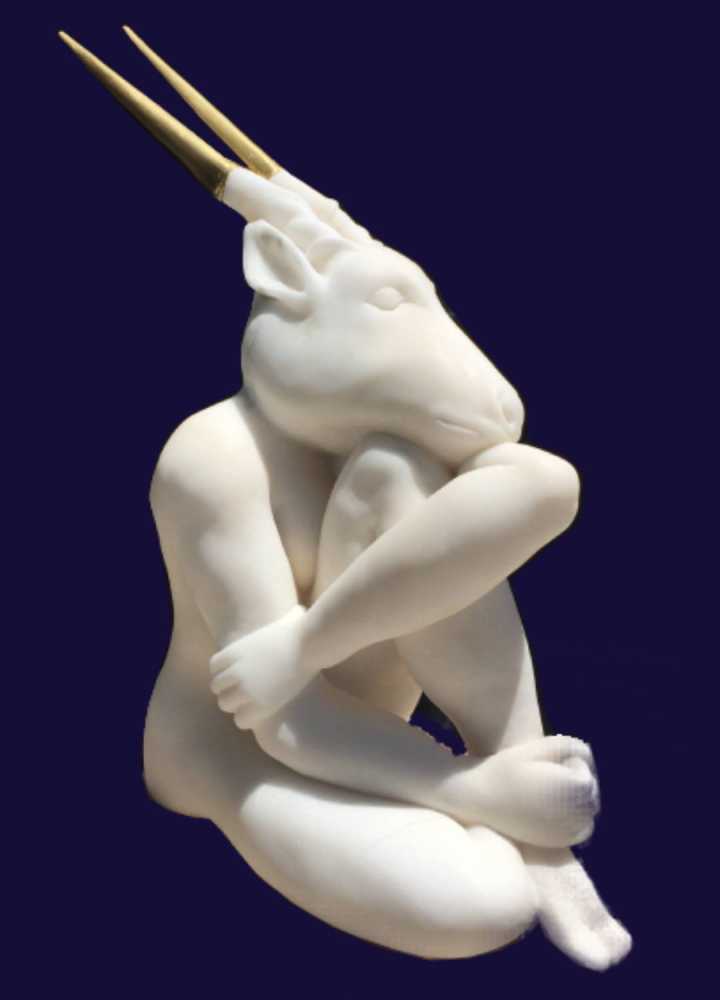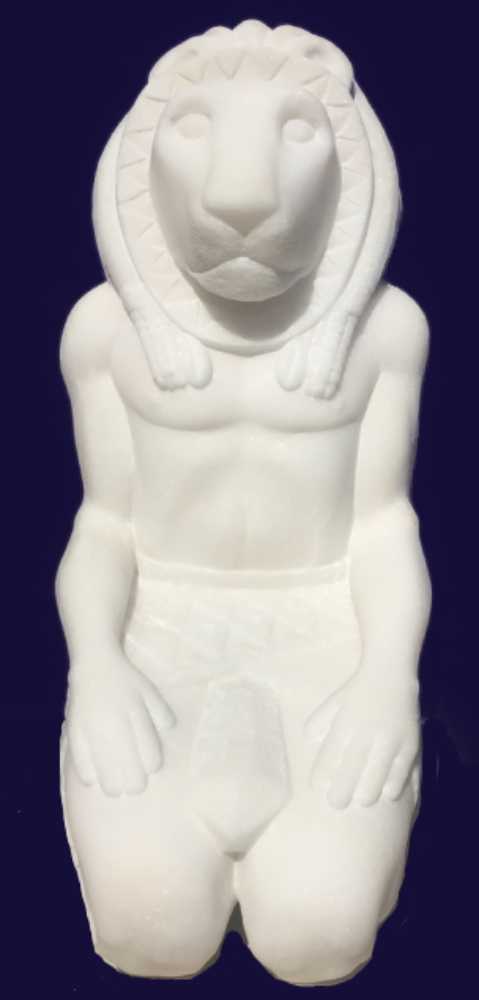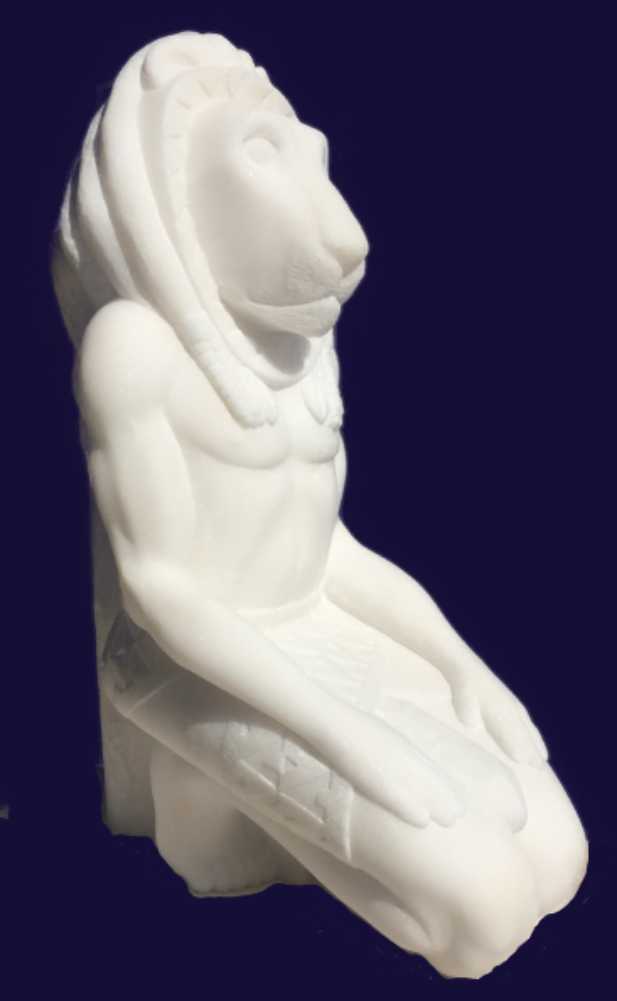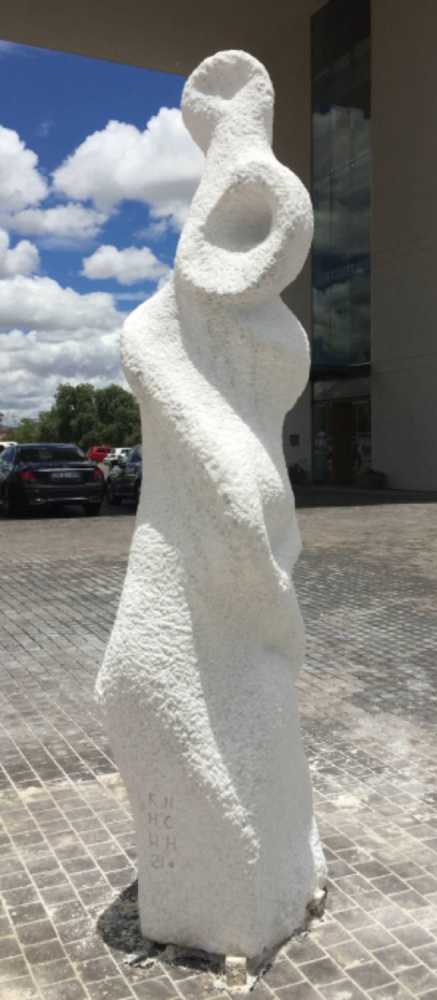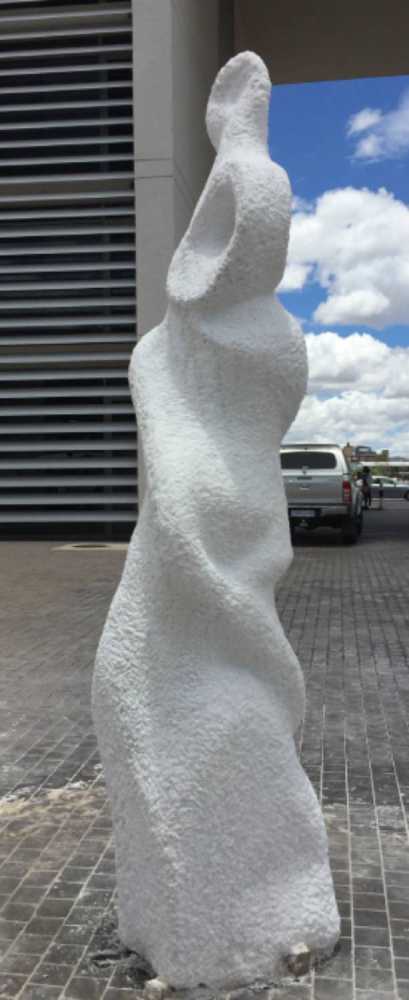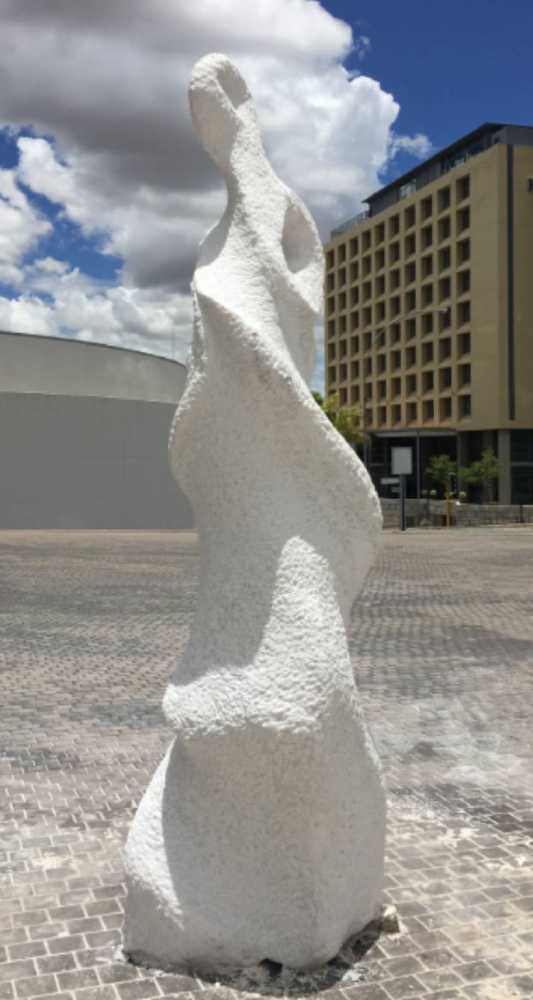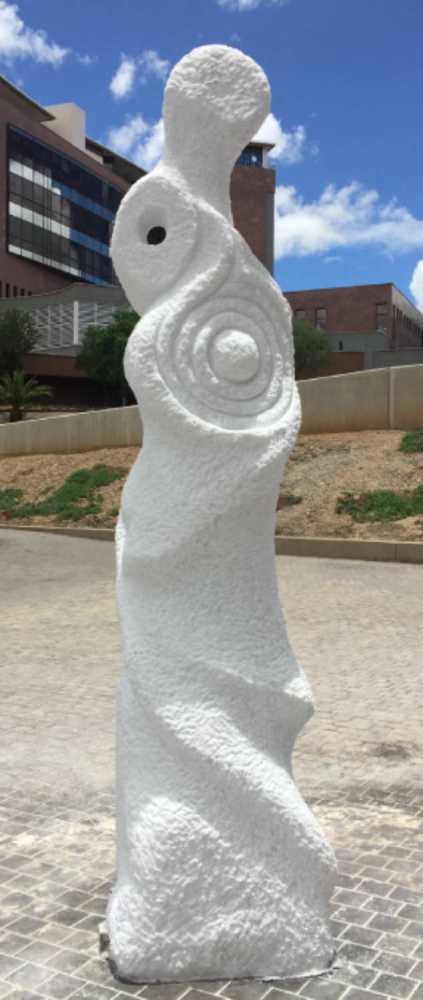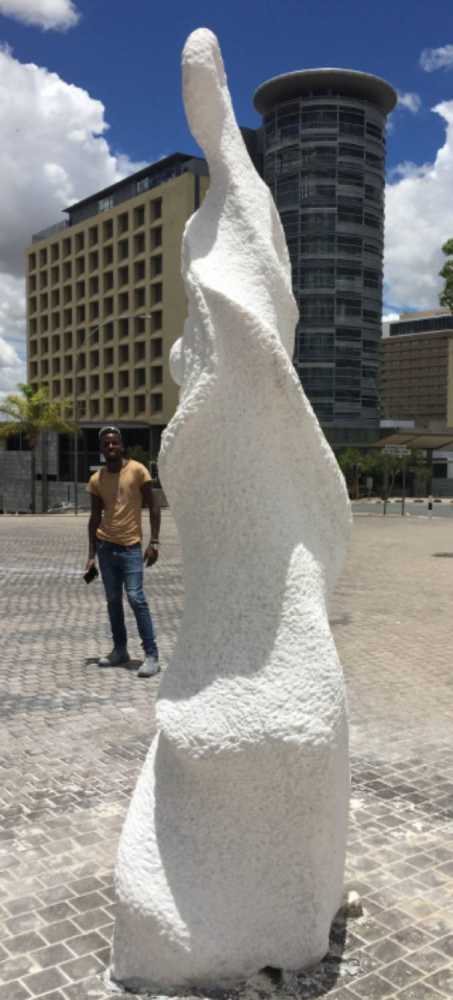Latest Works
For this latest set of works we decided to explore what is the essence of Namibia and what sets it apart from other countries and its artworks. A clear indication is its immense diversity in cultures, animal and plant life. In order to capture this uniqueness we decided to combine some of these aspects, thus animal head and human body. Many of our horned animals like the Oryx and Kudu are indigenous to this country. One of the oldest people on this planet, the Bushmen or San often integrate these animals in their dances and folklore, becoming one with them.
Dog and Human relationship
Kambezunda Ngavee
For centuries, dogs have been labeled as “man’s best friend,” offering companionship and loyalty to their human counterparts. Dogs have been used for service due to their incredible sense of smell, with research showing they can smell fear, anxiety and sadness. As African-born believers there is a spirit that runs through our veins that connects us with all animals and protects us. The power of soul and setback at times your wonders, what a beauty of living on earth.
Dogs assist humans by guiding them, and its mobility is vital to humans. Because as an African we identify with this spiritual bond between the two, as a companion dogs can become protective when they see their counterparts being threatened. In the process of sculpting there were guidelines of the stone itself. One has to remember that stone is an unforgiving material, it’s a one-way journey that lands you at some experimental place of excitement. The outcome is what excites me, because of the experimental, final piece that turns out to be the bond between human and dog resulting into a sculpture.
Calm and confident woman
Kambezunda Ngavee
Calm and Confident Woman refers to a state of mindfulness, being free from excitement and disturbance – a state of serenity and peace. When women are relaxed and confident, they are clearheaded and able to take good decisions. This sculpture depicts an Oryx head with a human female body. Just as the Oryx is appreciated for its natural beauty, women should also be revered and respected.
This sculpture won the third prize in the 2020 Bank Windhoek Triennal
Elandii
Winfried Holze
The first impression of the sculpture is one of a naked, tightly hugging beautiful young girl or woman in a peaceful resting posture, with a fantasy mask of an Eland antelope on its head. However, on closer inspection one notices the right hand held in a kind of loose fist. Then there are some slight discolorations and imperfections (normal in marble stone) along the left calf muscle, the back and the neck. They appear like scars on the body. Has Elandii maybe been mistreated, hit or kicked or maybe worse? Could it be that she is dreaming herself into an Alice-in-Wonderland like fantasy in order to escape reality? One then realizes that the animal head is not a mask but the actual head on the body.
This is when the figure begins its Yin-Yang journey. The spectator is constantly switching between seeing a sexy figure of beauty, expressing relaxation and tranquility, to one expressing helplessness, inner unrest, despair and sadness.
This sculpture is one of fun, fantasy and calmness but also one creating awareness of gender based violence by showing the effects it has on young girls and woman. Often after a violent incident, the victim tries to escape reality by imagining herself into another state or person, even if it is just for the moment. In this case it’s the Eland antelope which ranges amongst the biggest and strongest wild animals in the Namibian bush. Thus the name Elandii.
Sphinx man
Henry Coetzee
The Egyptians already expressed the human body/ animal head theme in their burial and royal monumental sculptures.
Unity
W. Holze + K. Ngavee + H. Coetzee
Following an initiative by the National Art gallery with the theme: ‘whats your story’, the contribution from WHUDA MARBLE ART was an artwork carved in Karibib marble stone. The challenge that we set ourselves was that three artists (Kambezunda Ngavee, Henry Coetzee and Winfried Holze) would work independently on a single marble stone on consecutive days (i.e. one day the one works, the next day the other one and the third day the third artist and so on) and with different themes each, to eventually culminate into one artwork. Work commenced on 16th November 2020 and finished on Friday 8th January 2021.
With this artwork the following messages were to be conveyed:
- To demonstrate that persons of complete different backgroundscan work together in Namibia with a single purpose and make a success of it.
- To prove that a Covid-19 pandemic crisis can be overcome when managed creatively.
- That instead of removing or demolishing existing artworks or monuments, thereby attempting to delete history, one should rather ADD to the discourse and create awareness, by contributing creatively towards a better understanding and reconciliation.
- To create awareness for the need of art and especially public art as this is very much lacking in our public spaces. We need to tell ourselves, our visitors and future generations about who and what we are as a nation. Artworks also contribute towards the beautification and livability of our urban environments.
- Create awareness of the availability of high quality marble stone in Namibia, a mineral very rare in sub-Saharan Africa and currently exclusively exploited by foreign nations. Local value addition of local resources should rather be made a priority, in order to add to wealth and employment creation within the country.
- An attempt at creating an added Namibian identity in the skillful production of stone art, particularly in marble stone. Currently much of African stone art is characteristically Zimbabwean and predominantly soap- , lime- or sand stone.
- Artists are conduits of light, they are responsible to bring messages of hope to the public in times of darkness, releasing art to the world, as a form of inspiration.
It proved to be an extremely risky experiment that was undertaken to see whether it was possible to create a complete and aesthetically pleasing artwork without a prior plan, image, sketch or discussion as to what should be created. In addition, the artwork was to be done without each artist knowing what the other artists are doing until a certain stage where the artwork is to be amalgamated. Judging from the final product, one can safely say that this artwork has been a complete success story, demonstrating that as individuals and as a nation we can work together, irrespective of background, creed or colour. It thus symbolizes unity, hope and cooperation for our nation, thus its name: UNITY.
The sculpture inevitably could only be an abstract work of art. Every new angle provides a new impression as one walks around it. Unlike a ‘David’ from Michelangelo for instance where what you see is what you get, in this case everybody will every time see something new from every new viewpoint. This adds to the multiplicity of the sculpture in which everybody can get involved, interpret and engage with it freely. Its soft edges and curves are non aggressive or provocative, but in harmony with the rest. It even has a spiritual quality about it.
